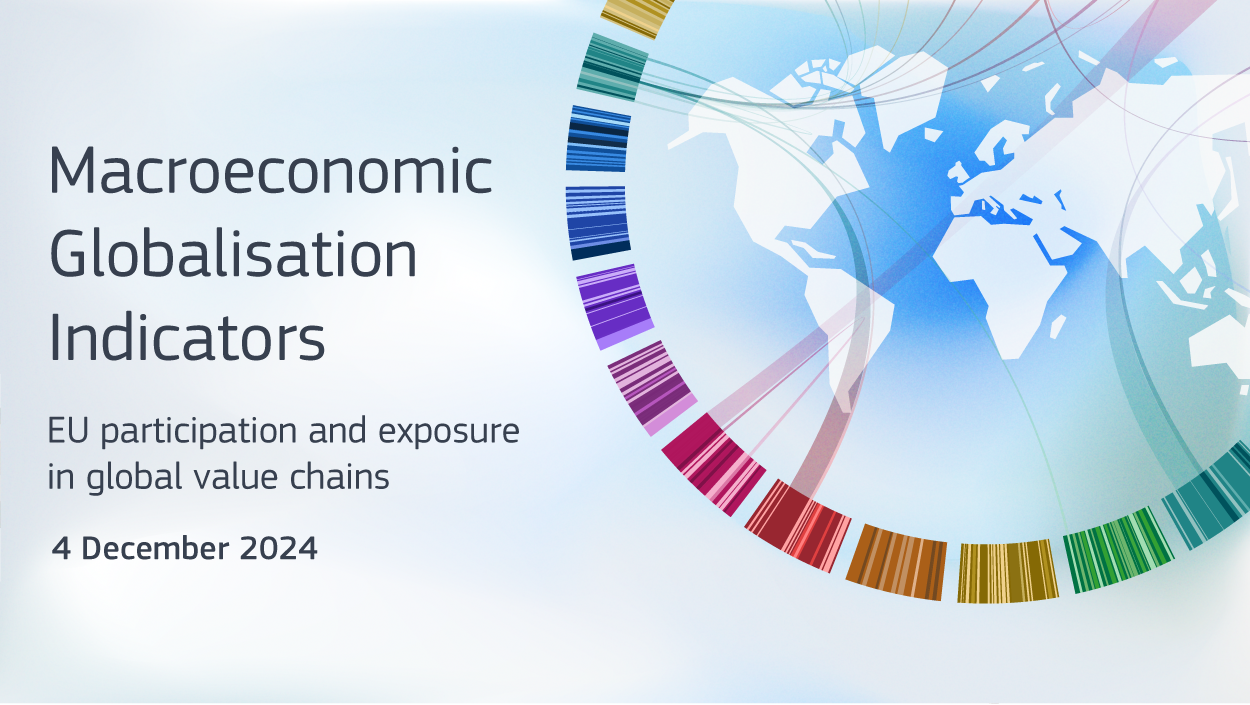JRC and Eurostat present the Macroeconomic Globalisation Indicators, a novel dataset to analyse and understand the EU's participation and exposure in global value chains.
- globalisation | economic development | economic policy | international trade
- Wednesday 4 December 2024, 11:00 - 12:00 (CET)
- Live streaming available
Practical information
- When
- Wednesday 4 December 2024, 11:00 - 12:00 (CET)
- Livestream
- Starts on Wednesday 4 December 2024, 10:45 (CET)
- Who should attend
- Policymakers, researchers and statisticians, in particular those working in macroeconomics and global trade relations
- Languages
- English
Description
Global trade is the essence of manufacturing industries, as it enables access to a variety of resources, markets and innovative ideas. However, the current political context, economic fluctuations and environmental challenges have made clear the importance of developing robust and diversified value chains, to leverage the value of our single market.
Join us in the presentation of the JRC and Eurostat Macroeconomic Globalisation Indicators. The event will feature the following speakers:
- Mariana Kotzeva, Director-General of Eurostat
- Sabine Weyand, Director-General for Trade
- Bernard Magenhann, (acting) Director-General of the Joint Research Centre
- Sanjiv Mahajan, President of the International Input-Output Association
Although in-person attendance is by invitation only, this event will be livestreamed. Livestreaming link will be available on this page the day of the event.
How to map, analyse and align EU strategic autonomy needs with single market opportunities?
Eurostat and JRC produce the FIGARO tables, which provide a picture of the world economy by breaking down national GDPs in industrial sectors and products, offering trade data across countries, and including employment, production, consumption and environmental figures.
Drawing from these data, and focusing on EU countries, we present a first version of 12 Macroeconomic Globalisation indicators. They will allow Member States to understand their level of participation in global value chains, both within the EU (i.e. the single market) and with respect to key global trading partners such as China and the United States.

